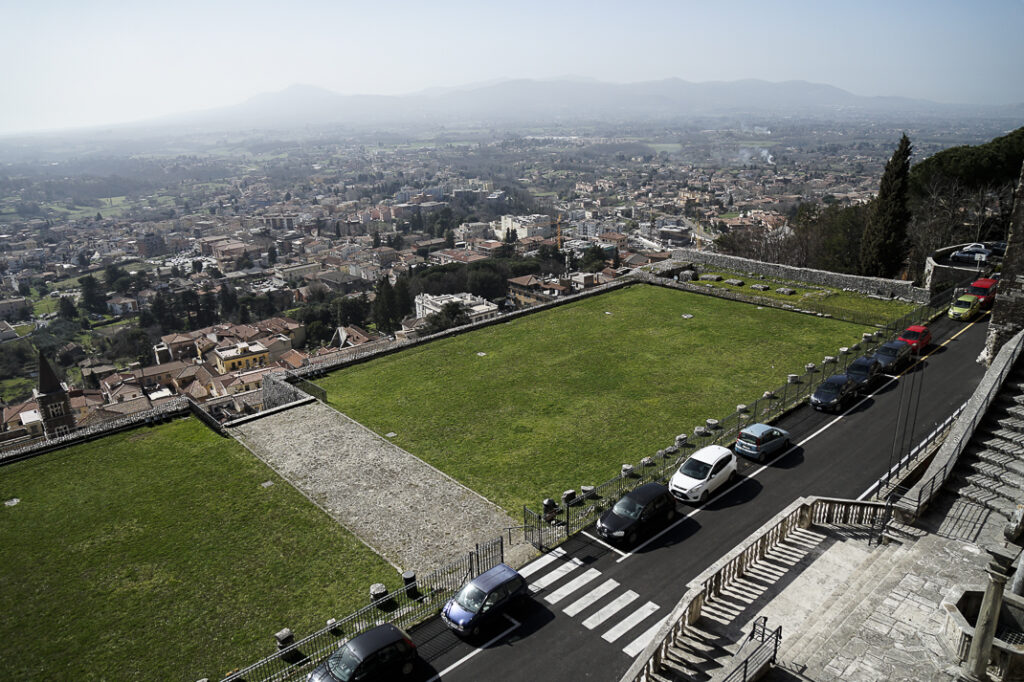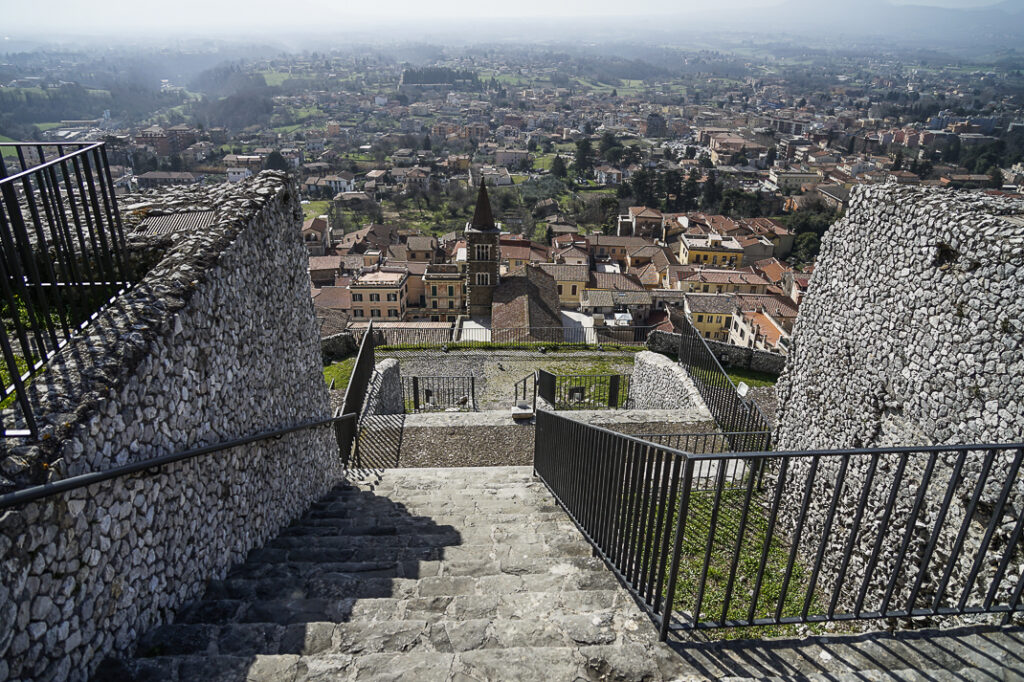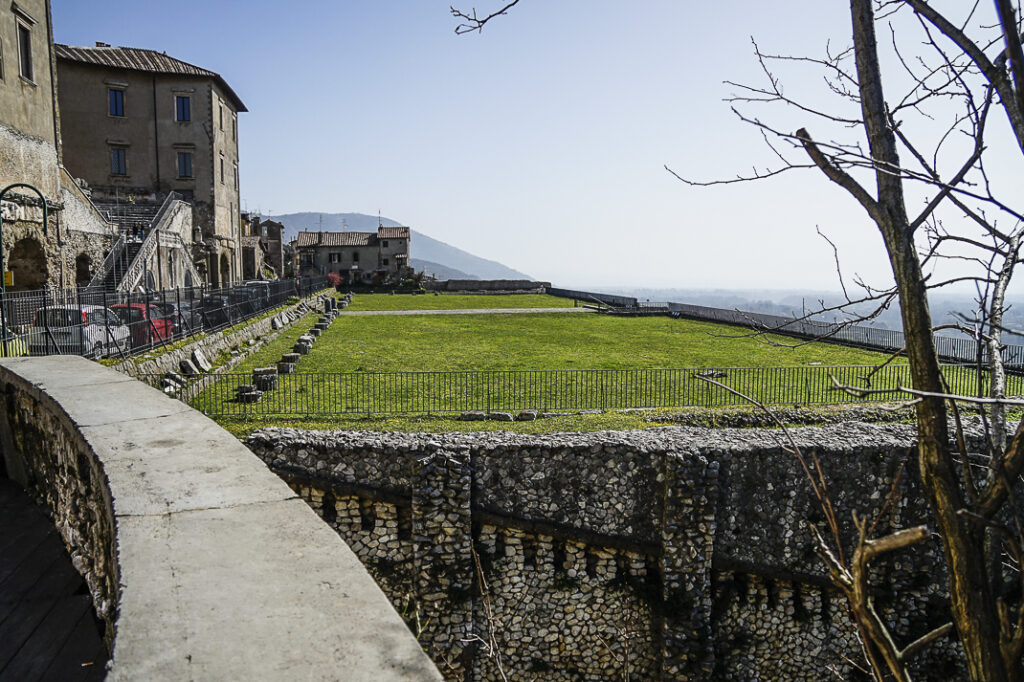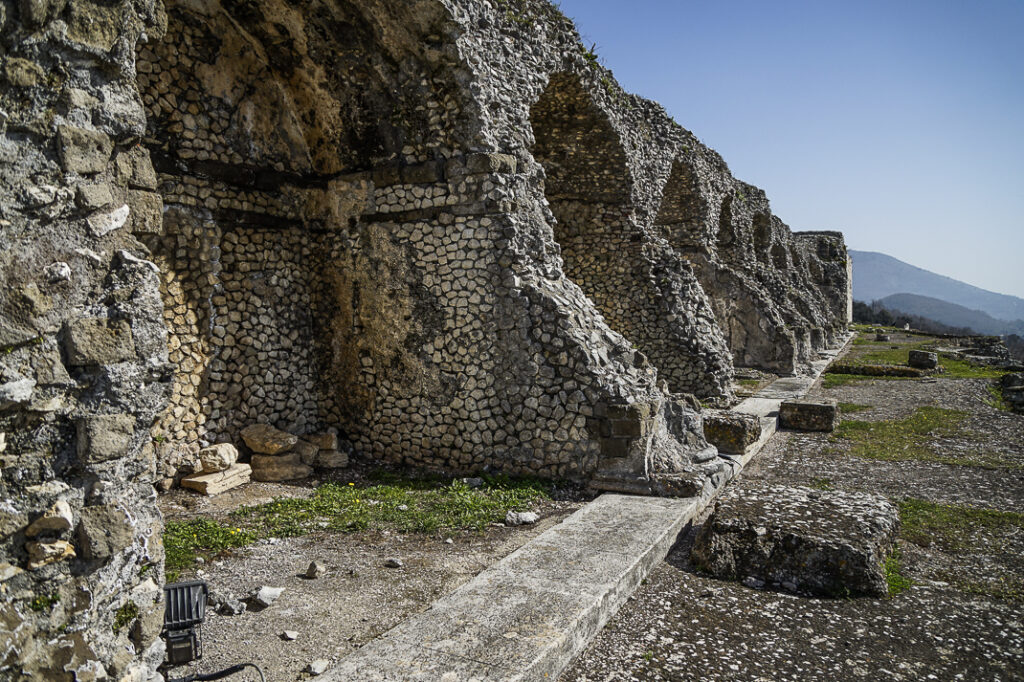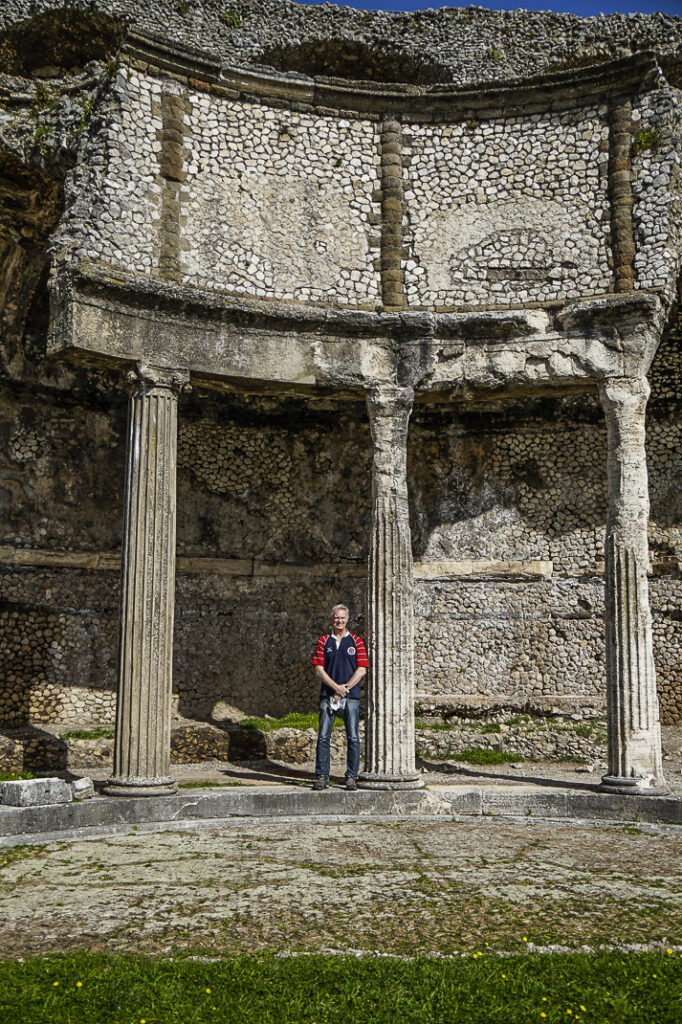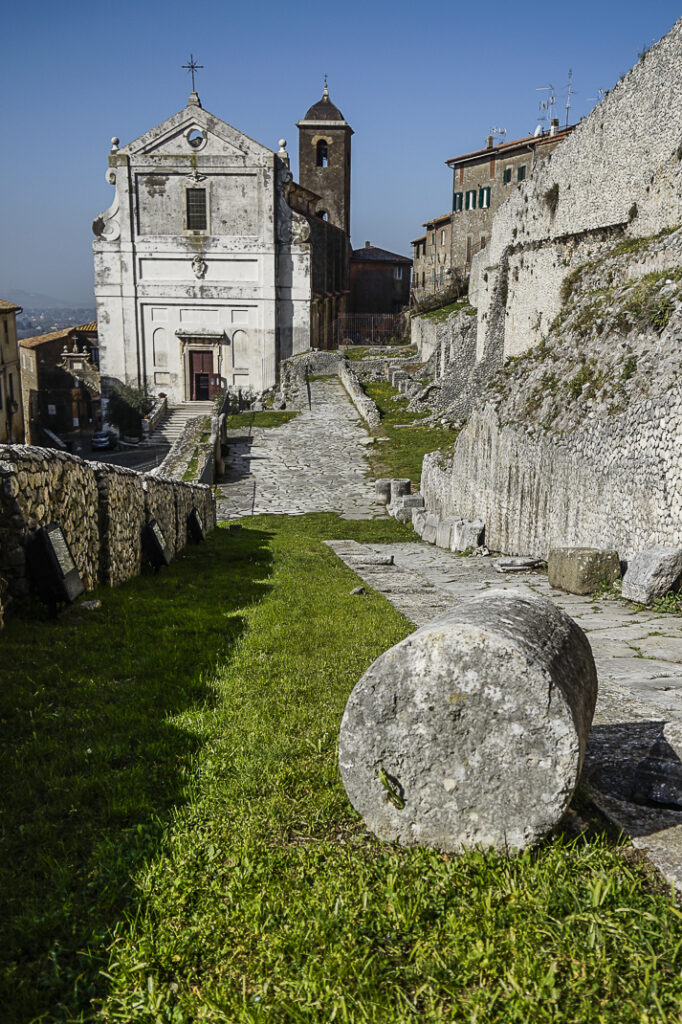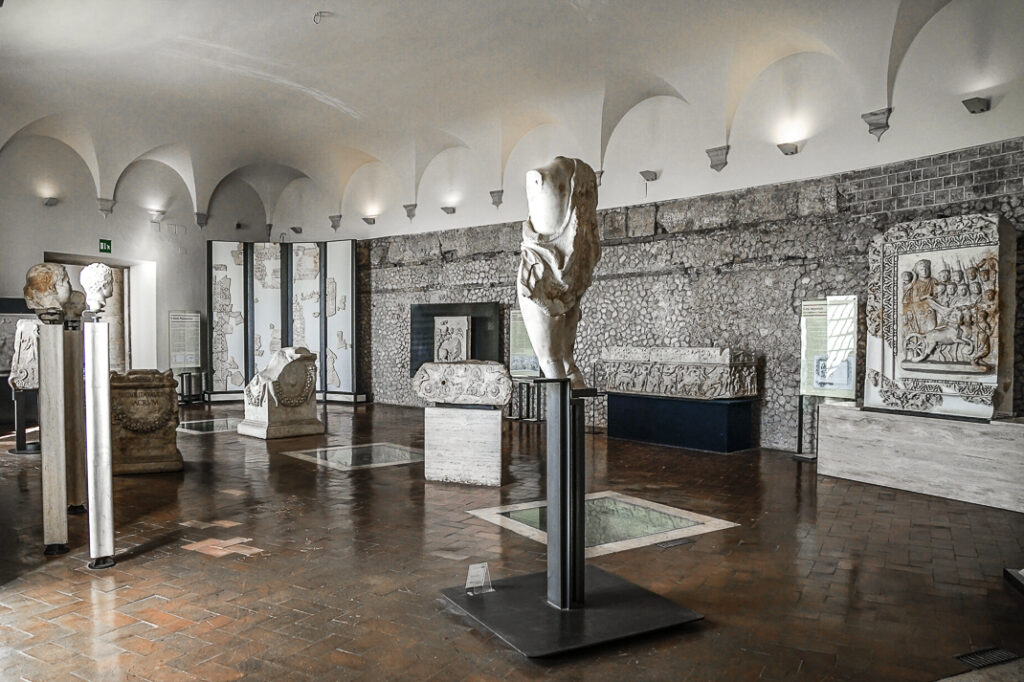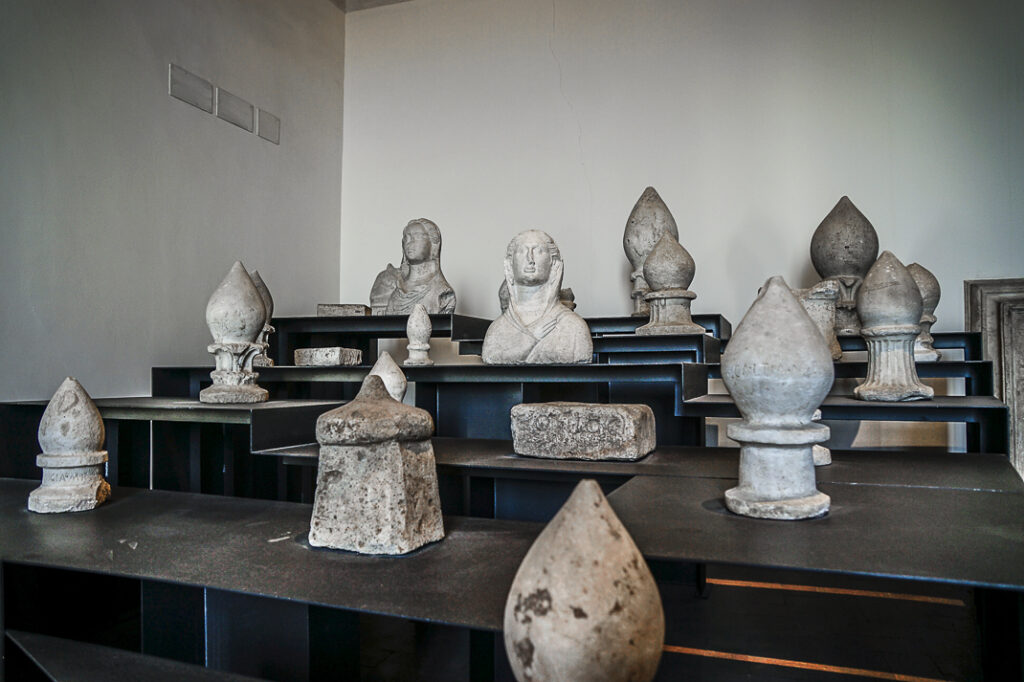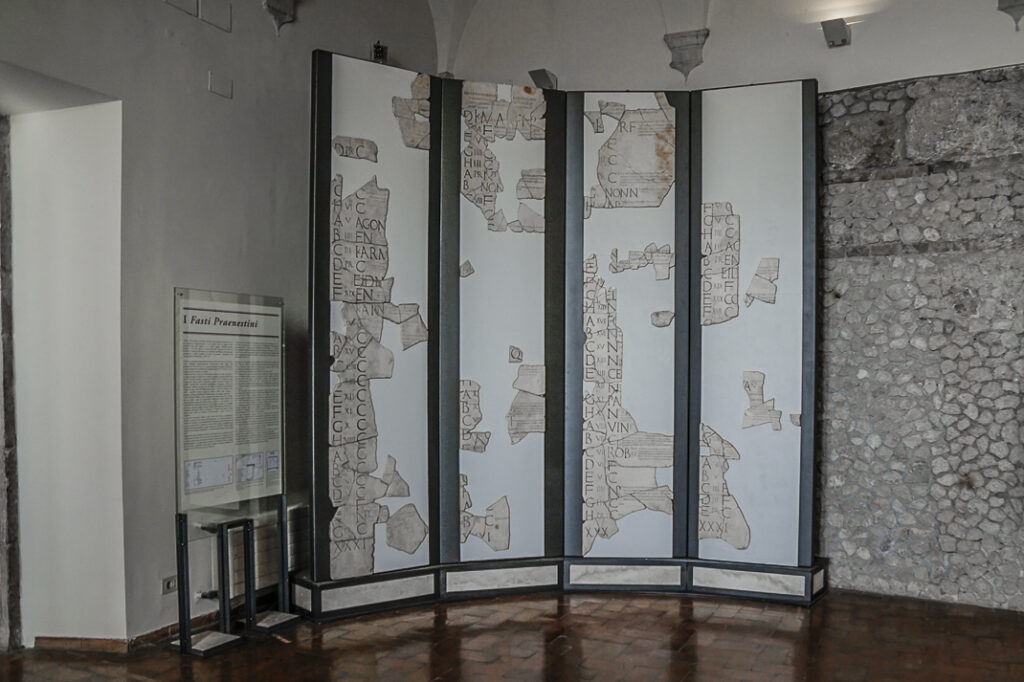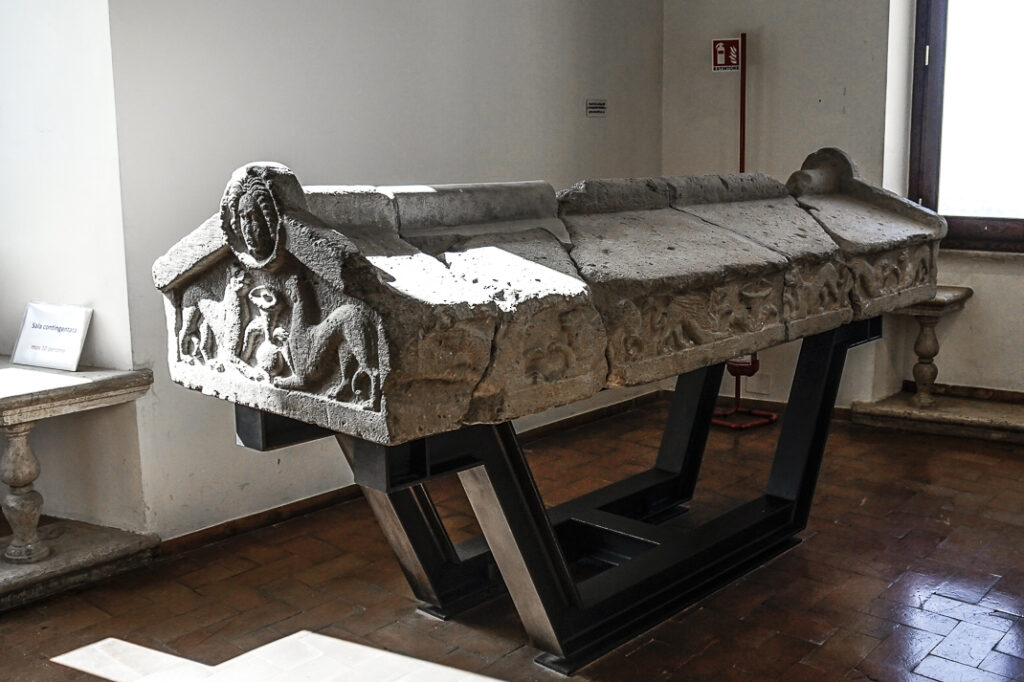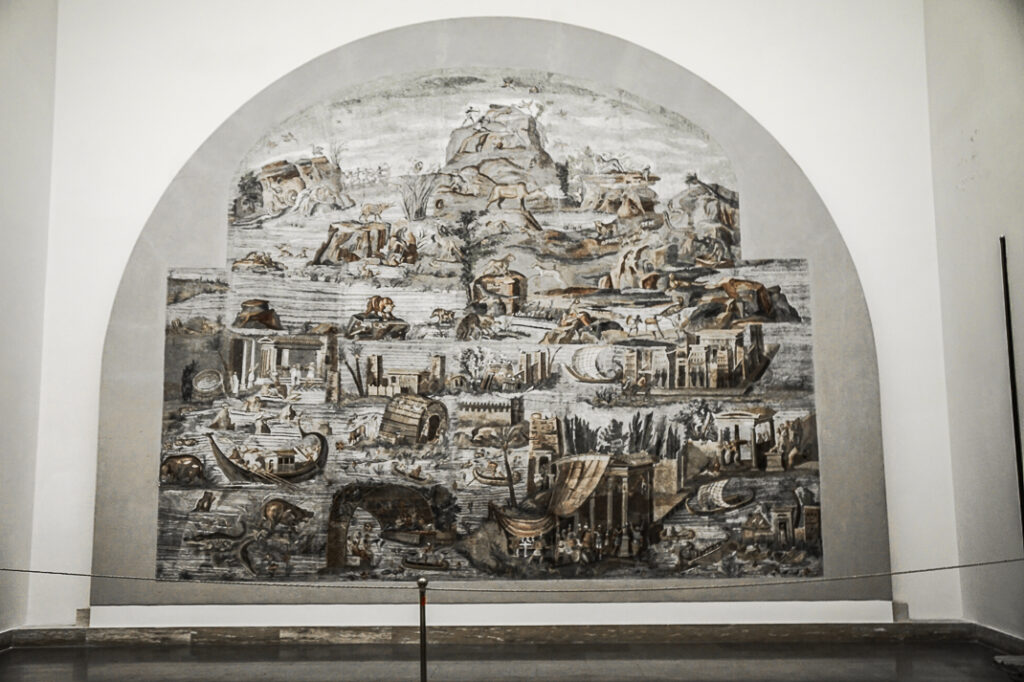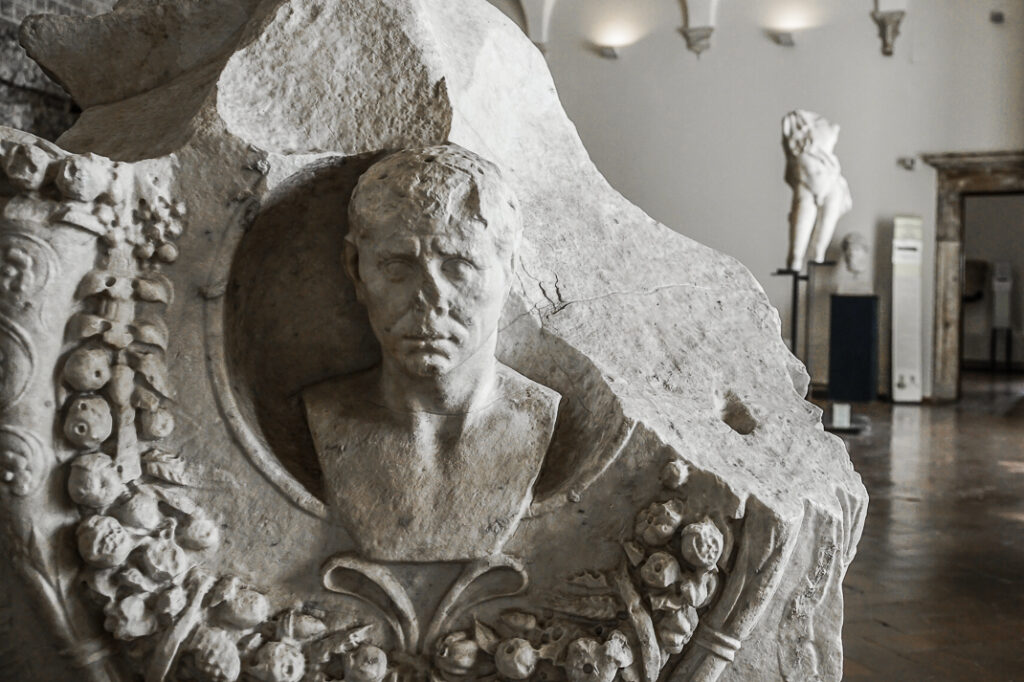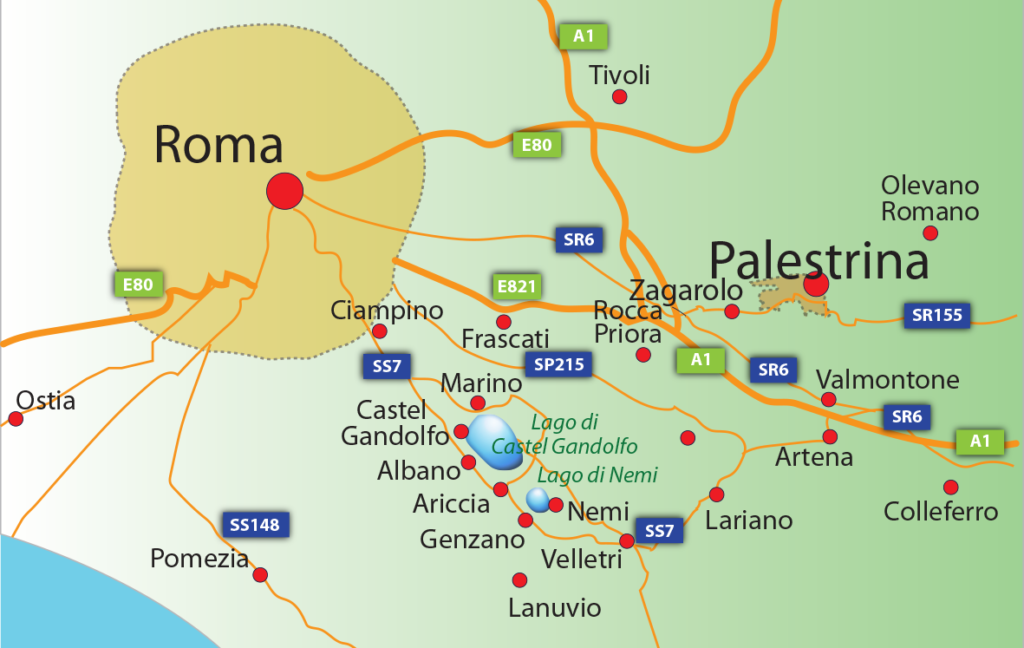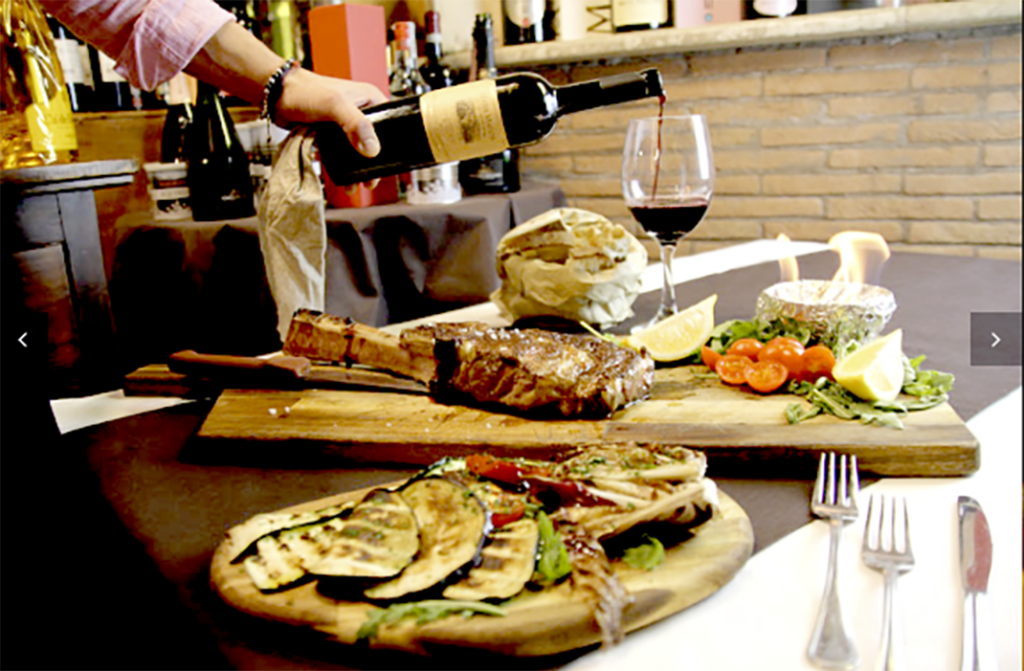Palestrina: Italy’s largest sanctuary has lucky past
Before the Roman Empire, there was the Roman Republic. And a major site during the Roman Republic that has faded in the wake of modern Rome is Palestrina.
Located 22 miles east of Rome, Palestrina was once a prime place of worship and a fiercely independent city state. Palestrina fought against the Romans from 373-370 B.C. before finally succumbing in 338 B.C.
Today it features ruins of the biggest sanctuary in Italy, one of the country’s best archaeological museums and one of the prettiest views of the Lazio countryside.
And all points of interest are right next to each other atop the hill. You won’t find many tourists here. It’s not on the main tourist route.
But it’s easy to reach and an inexpensive, authentic Italian country restaurant awaits you at the end of the day.
Things to do
1 • Temple of Fortuna Primigenia.
Much remains from Italy’s largest sanctuary. Go down a long staircase from the road to the temple which at the time covered the length of half a football field.
Three huge Corinthian columns hold up a massive stone wall which, in its time, held up a pedestrian road. Still standing are numerous stone walls that could’ve been homes or shops. In its original state, it was a beautiful complex. It featured terraces, staircases such as the one still standing, a basilica, a meeting hall and two reservoirs that supplied water for the fountain and surrounding town.
Info: Piazza dell Corina, 39-06-953-8100, https://direzioneregionalemuseilazio.cultura.gov.it/en/luoghi/museo-archeologico-nazionale-di-palestrina-e-santuario-della-fortuna-primigenia/
June-August 9 a.m.-7 p.m., September 9 a.m.-5:30 p.m., October 9 a.m.-5 p.m., November-February 9 a.m.-4 p.m., March 9 a.m.-5 p.m., April 9 a.m.-6 p.m., May 9 a.m.-6:30 p.m., €7 (includes museum), €5 ages 18-25.
2 • Palazzo Barberini and Chiesa di Santa Rosalia.
Adjacent to the museum is a palace which is still the residence of the Prince Benedetto.
You enter through the prince’s private garden, known as the Barberini Nymphaeum built in the second half of the 17th century. From here you can enter the rooms that are accessible.
They include the Hall of Urban VII, the pope who entertained guests in a room entirely lined with frescoes. The palace is also adjacent to the Chiesa di Santa Rosalia. Built in 1660, it features sculptures and remains of ancient funeral rites. It also has a great view of the countryside below.
3 • National Archaeological Museum. Built in 1956, this info-friendly museum has a huge variety to feed every curious soul about Roman history. It’s separated into various thematic rooms.
One room is filled with marble busts of wealthy inhabitants’ tombs. One room has a copy of a calendar from 70-120 AD featuring 12 huge slabs, each representing a different month. Upstairs is a necropolis with long, giant tombs and limestone heads from tombstones from the 4th-2nd century B.C.
It also has massive wall mosaics, including the museum’s highlight. The Flooding of the Nile depicts life in Egypt when it was Roman territory starting in 30 B.C. The mosaic is 20 x 13 feet.
Info: Via Barberini 22, 39-06-953-8100, http://www.polomusealelazio.beniculturali.it/index.php?it/228/museo-archeologico-nazionale-di-palestrina-e-santuario-della-fortuna-primigenia,
drm-laz@beniculturali.it. 9 a.m.-8 p.m. €7 (includes archaeological site).
Lucky Fortuna Primigenia
During the Roman Republic, luck was of the utmost importance. In 204 B.C., the Romans came to Palestrina, known as Praeneste then, and built the huge sanctuary in honor of Fortuna Primigenia, the Roman Goddess of Fate, and Isis, the Egyptian goddess considered the mother of all pharoahs.
Mothers brought new-born children to the sanctuary for luck during a time when half the children died before the age of 5. Cicero, the famous writer during the Roman Empire, wrote that the sanctuary was the luckiest place in all of Rome. He also wrote that young boys were chosen to pull lots from a well to reveal divinations, which the local people trusted.
They believed the lots predicted the future. Roman commanders often came to Praeneste for consultation before battles. During the Roman Empire, emperors often visited for the fresh mountain air and scenery. It remains a prime example of a pagan temple complex. The excavation began after World War II and has been open to the public since 1954.
Where to eat:
Agriturismo Casale Pepe, Via Quadrelle 26/28, Palestrina, 06-9563-5029, 333-276-8723, info@casalepepe.com, www.casalepepe.com
Located at the bottom of the hill, it’s a two-story farmhouse where local farmhands gather to eat authentic local dishes in a forest setting at cheap prices. Try the gnocchi amatriciana, small potato dumplings covered in a sauce of tomatoes, guanciale (pig’s cheek), onions and pecorino cheese.
For more information:
IAT Ufficio Informazione, Via del Tempio 1, 39-06-953-021.



